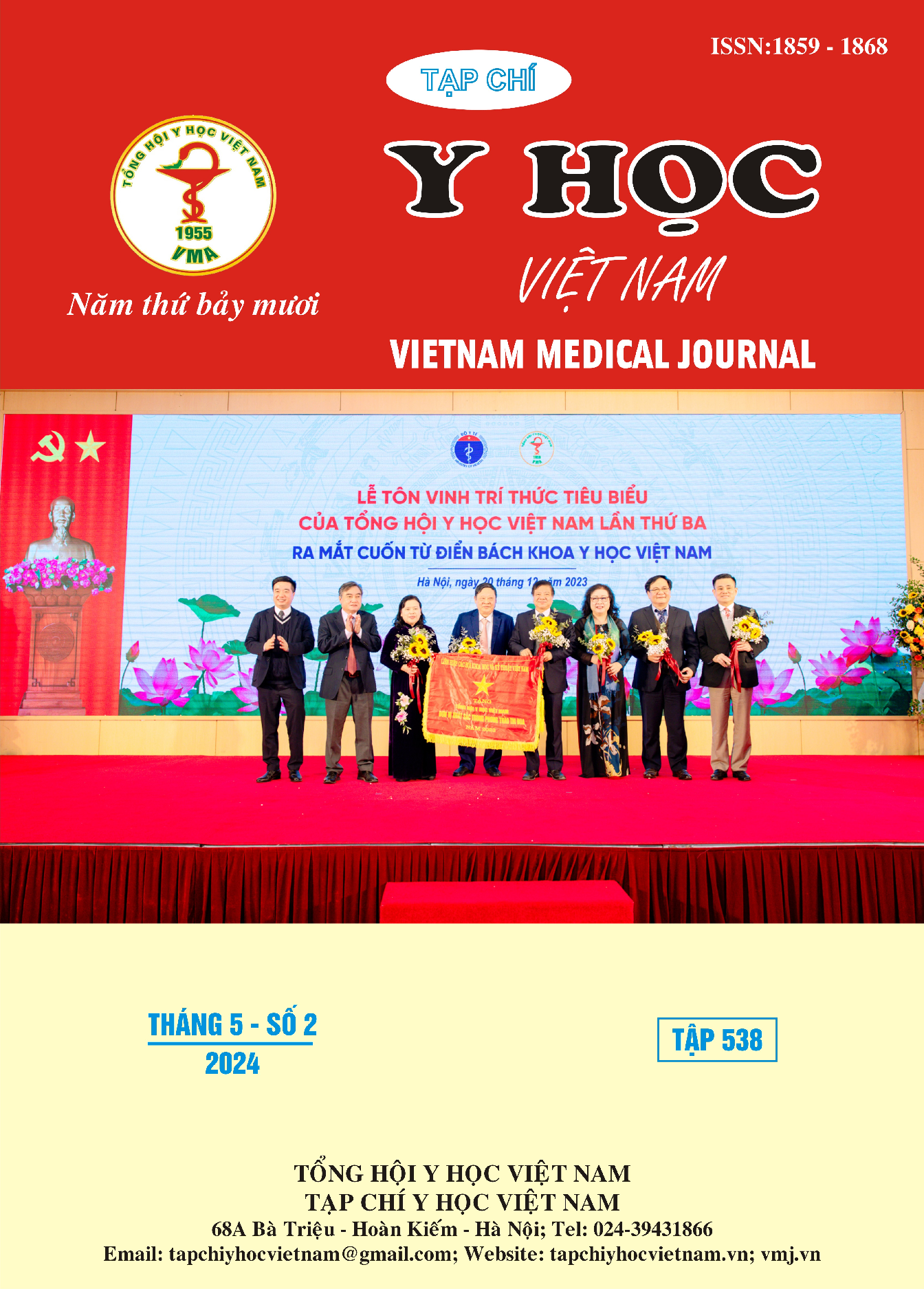THE SITTUATION AND RISK FACTORS OF LIVER FLUKE INFECTION OPISTHORCHIS VIVERRINI IN HUMAN IN AN MY COMMUNE, TUY AN DISTRICT, PHU YEN PROVINCE (2018 – 2019)
Main Article Content
Abstract
Backgrounds: Opisthorchiasis is a neglected tropical disease caused by the liver fluke Opisthorchis viverrini. Human liver fluke infection caused by Opisthorchis viverrini increases the risk cholangiocarcinoma. The habit of extensively consuming raw or half-cooked fish was the most important risk factor. Methods: Analytical descriptive study with cross-sectional surveys in 460 people over 18 years old at the study site. Result: The prevalence of infected O. viverrini in human in An My commune, Tuy An district, Phu Yen province was 20,22%. 87,7% of cases were mild infectious intensity, the mean O. viverrini infection intensity was 549,33 ± 994,92 EPG. The positivity rate was higher in male (25,0%) than in female (16,67%) (p<0,05). The infection rate increases with age and highest in the age group over 60 years old (33,33%) (p<0,05). People who use fresh manure in farming and animal husbandry were infected 1,88 times higher odds of infection than those who do not use it (95%CI: 1,1-3,21). People who eating raw fish were infected 9,9 times higher odds of infection than those who had never eaten raw fish (95% CI: 5,14-13,78). The prevalence of O. viverrini infection in the group people that aet raw fish 1 times/week higher than 1 times/month and 2-3 times/6 month (p<0,05). Conclusion: The prevalence of infected O. viverrini in human in An My commune, Tuy An district, Phu Yen province province was 20,22%. The majority of cases were mild infectious intensity.
Article Details
Keywords
Opisthorchis viverrini; eaten raw fish.
References
2. Bộ Y tế (2016), Quyết định số 1931/QĐ-BYT ngày 19 tháng 5 năm 2016 về việc ban hành hướng dẫn tẩy sán lá gan nhỏ tại cộng đồng, Cục quản lý khám chữa bệnh, chủ biên, Hà Nội, Việt Nam.
3. N. Kiatsopit, P. Sithithaworn, K. Kopolrat và các cộng sự. (2014), "Seasonal cercarial emergence patterns of Opisthorchis viverrini infecting Bithynia siamensis goniomphalos from Vientiane Province, Lao PDR", Parasit Vectors, 7, tr. 551.
4. P. R. Torgerson và C. N. Macpherson (2011), "The socioeconomic burden of parasitic zoonoses: global trends", Vet Parasitol, 182(1), tr. 79-95.
5. X. Q. Cai, H. Q. Yu, J. S. Bai và các cộng sự. (2012), "Development of a TaqMan based real-time PCR assay for detection of Clonorchis sinensis DNA in human stool samples and fishes", Parasitol Int, 61(1), tr. 183-6.
6. Nguyeễn Thị Thanh Huyền (2018), Nghiên cứu một số đặc điểm dịch tễ nhiễm sán lá nhỏ và hiệu quả can thiệp tại một số điểm thuộc tỉnh Bắc Giang và Bình Định, năm 2016 - 2017, Viện Sốt rét - Ký sinh trùng - Côn trùng Trung ương.
7. T. T. Dao, T. V. Bui, E. N. Abatih và các cộng sự. (2016), "Opisthorchis viverrini infections and associated risk factors in a lowland area of Binh Dinh Province, Central Vietnam", Acta Trop, 157, tr. 151-7.
8. Pacific World Health Organization. Regional Office for the Western (2008), Review on the epidemiological profile of helminthiases and their control in the Western Pacific region, 1997-2008, WHO Regional Office for the Western Pacific, Manila.
9. H. Q. Vinh, W. Phimpraphai, S. Tangkawattana và các cộng sự. (2017), "Risk factors for Clonorchis sinensis infection transmission in humans in northern Vietnam: A descriptive and social network analysis study", Parasitol Int, 66(2), tr. 74-82.
10. Z. L. Tang, Y. Huang và X. B. Yu (2016), "Current status and perspectives of Clonorchis sinensis and clonorchiasis: epidemiology, pathogenesis, omics, prevention and control", Infect Dis Poverty, 5(1), tr. 71.


